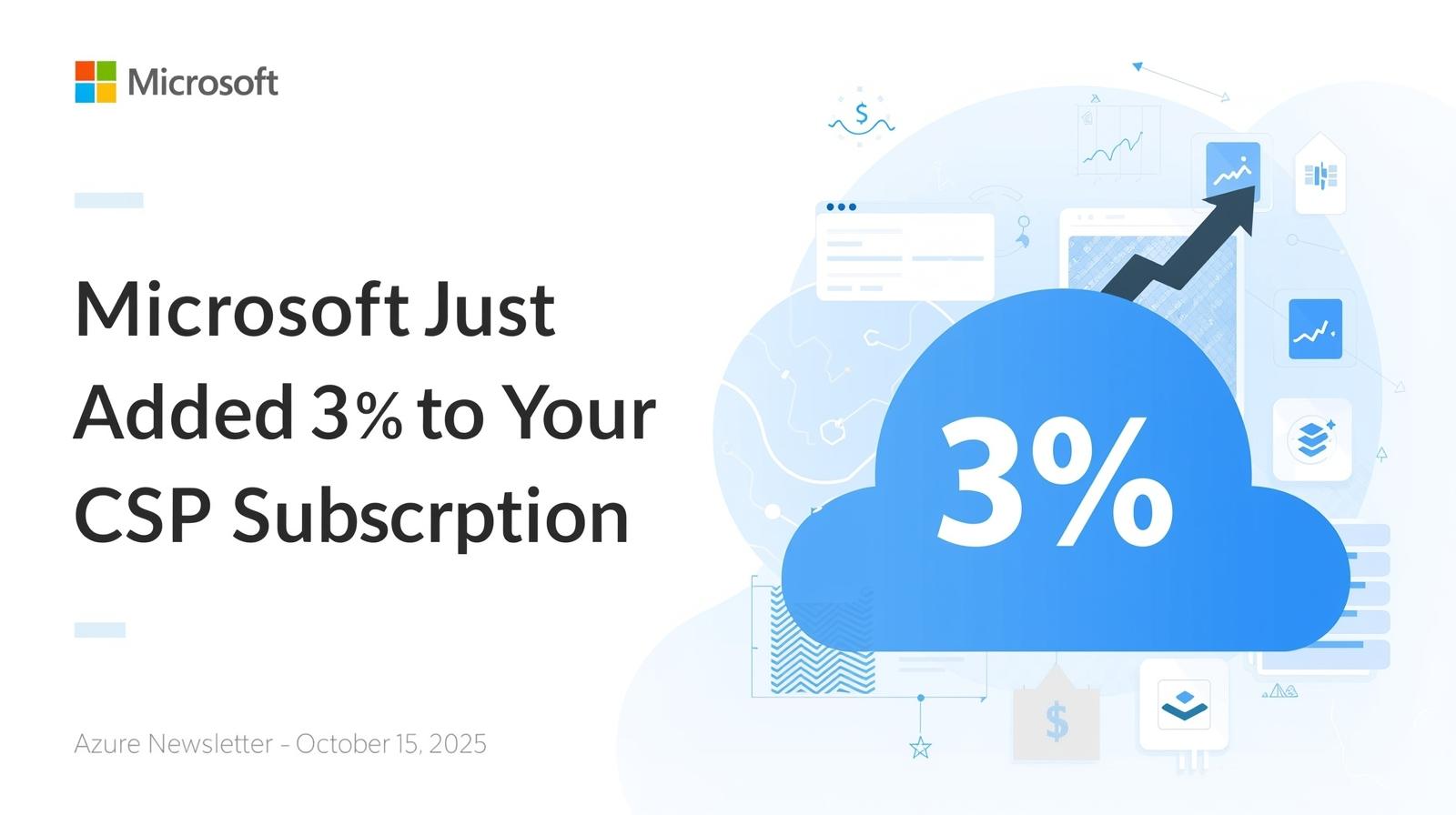
October 14, 2025, marked a pivotal date for Azure partners and enterprise cloud teams. Microsoft introduced pricing, policy, and security updates that directly affect Azure Cloud Solution Provider (CSP) subscriptions, alongside critical operating system and infrastructure milestones.
These changes demand immediate forecasting adjustments and cost optimization planning. For teams focused on cloud financial governance, understanding the Extended Service Term (EST) update, Windows 10 end-of-support, and confidential compute security patches is essential.
Organizations must now realign budgets and forecasting models as mandatory pricing and support adjustments reshape the Azure ecosystem.
Effective April 1, 2026, Microsoft will remove the complimentary grace period for Cloud Solution Provider (CSP) subscriptions after expiration.
📌 Important: This applies only to CSP partners and their customers, not direct Azure pay-as-you-go accounts.

⚠️ Reminder: Finance teams should model the new baseline costs now to ensure accurate Q1 2026 budget forecasts and prevent end-of-term disruptions.
October 14, 2025, officially ended mainstream support for Windows 10. This retirement forces businesses toward three primary paths:
Microsoft’s EoS milestone also extends into operational continuity. Integrating migration efforts with promotions like Windows 365 can offset ESU expenses and sustain regulatory compliance for hybrid deployments.
Takeaway: Treat Windows 10 EoS as both a security and financial trigger point—align OS migrations with Azure modernization timelines before ESU rates escalate.
Microsoft’s October 2025 Patch Tuesday brought significant implications for sensitive workloads.
Security budgeting for FY2026 must prioritize patching compliance and VM class migration for SEV-SNP workloads.
A forward-looking migration plan is key to avoiding re-platforming costs:
These extensions provide a window for cloud architects to redesign data layers with maximum automation and reliability.
Modernization is no longer optional — it’s the only way to absorb the cost impact from policy changes while maintaining performance and compliance.
Azure Synapse Runtime for Apache Spark 3.5 is now Generally Available (GA), anchoring migration readiness for Microsoft Fabric Spark. For containerized workloads, Azure Container Apps (ACA) continues to stand out for simplifying microservices orchestration with autoscaling—including scale-to-zero for idle services.
These updates lead enterprises toward unified data platforms and serverless-first strategies, improving both scalability and cost efficiency.
Microsoft continues to fuse AI capabilities with platform modernization:
The Azure AI and Fabric convergence blueprint signals Microsoft’s commitment to governance, AI-native control, and unified observability.
Microsoft introduced an upgraded Azure Migrate .NET Assessment Tool focused on:
Developers can now transition legacy monoliths into Azure-native applications faster, reducing dependency drift and technical debt.
Azure Functions remains a key player in consumption-based pricing for event-driven workloads.
Azure Container Apps (ACA), enhanced with Dapr, simplifies complex distributed patterns—offering native service invocation, state management, and pub/sub messaging.
For deeper insight, Microsoft’s guides—such as “Designing High-Quality Distributed Cloud-Microservices Applications on Azure”—outline proven architectures for scalable, cost-efficient deployments.
The 3% CSP uplift underscores a larger shift: cloud cost control now hinges on predictive, AI-assisted financial governance.
Microsoft’s Well-Architected Framework (WAF) highlights cost optimization as a core pillar. Yet many enterprises still overcommit on Reserved Instances (RIs) or underuse Savings Plans (SPs). This imbalance leads to inefficiency — either locked capital or underutilized spend.
With fluctuating workloads across VMs, AI clusters, and serverless resources, static forecasting is losing relevance. Cloud cost governance tools must integrate automation to actively rebalance commitments across Azure, AWS, and GCP.
Modern FinOps depends on automation that learns from utilization data — not quarterly spreadsheets.
Traditional cloud commitments often lock you into long-term contracts that limit flexibility and increase financial risk. Usage.ai’s Flex Commitment Program offers a dynamic, risk-managed solution that maximizes savings while providing unmatched flexibility.
How It Works: Usage.ai analyzes your cloud usage, recommends optimal commitments, and automatically executes purchases—no code changes or downtime needed. All active commitments are visible in your dashboard for complete transparency.
Why Choose Flex Commitments?
Enjoy the cost benefits of long-term commitments paired with the security to adapt as your usage evolves, saving up to 57% on cloud spend—effortlessly.
Get Started:
Log in to Usage.ai, connect your Azure environment, and receive a free, automated analysis of your discount coverage and regional workload cost optimization strategies. This onboarding process typically takes between 5 and 10 minutes.
Ready to maximize profitability by automating your cloud commitment spend?
Usage.ai—de-risking cloud financial management in the era of rapid AWS innovation.
Share this post
